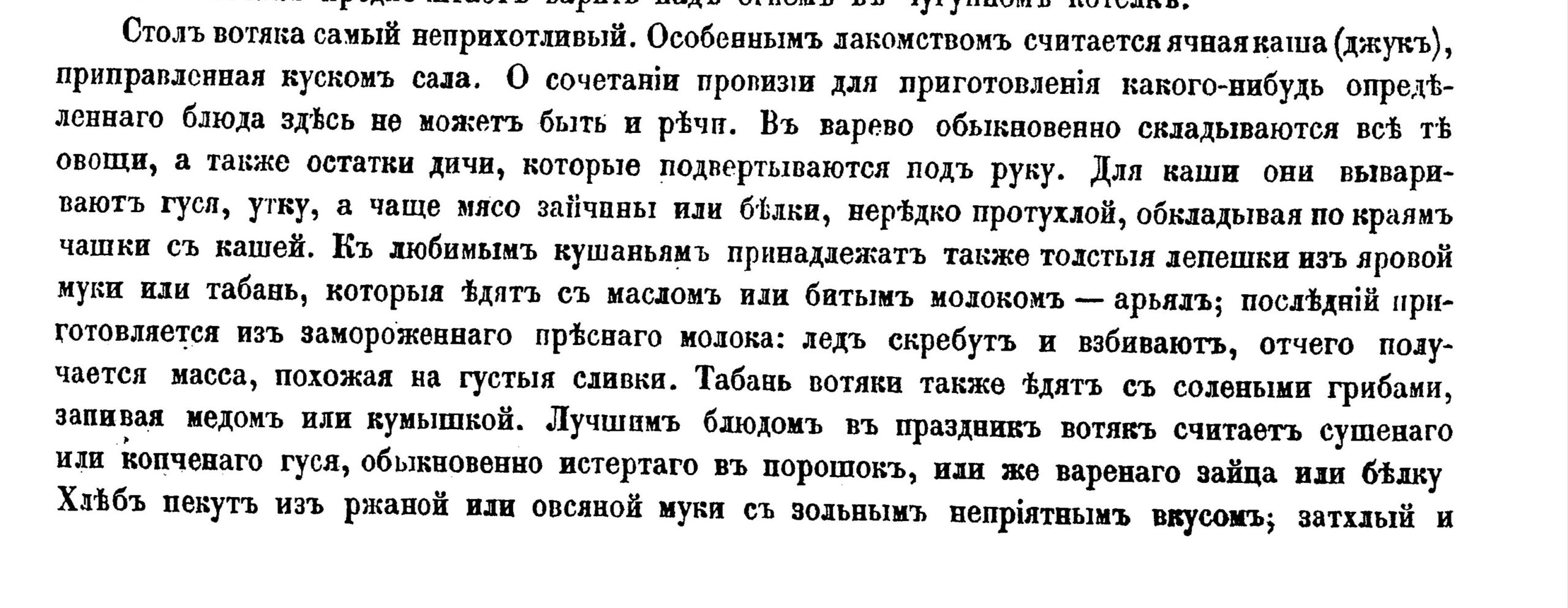Today, we’ll be discussing a rather unconventional topic for our newspaper – one that stirs up a great deal of controversy: cuisine. Anyone who has delved into sources about Russia or Russian culture has surely noticed that a famous Russian dish, it turns out, has Finno-Ugric origins. At first glance, this is presented as something positive: Russian culture is unique and diverse. But if you look deeper, the culture of the Russian people is quite literally being erased and attributed to others. Today, we’ll examine together what exactly is wrong with these claims.

The main arguments in support of the notion that “pelmeni are not Russian” can be` divided into two groups. The first: “Pelmeni originated in China, so Russians can’t claim them as their own.” Proponents trot out every method of wrapping meat in dough—from manty to baozi—and essentially declare: “This dish belongs to anyone but you.” The others insist that “pelmeni are an Udmurt and/or Komi dish, as confirmed by linguistics,” since the word “pelmen'” doesn’t sound particularly Slavic.
Indeed, the technique of wrapping filling in dough is one of the world’s oldest culinary practices. Archaeological discoveries in Uyghur Turfan—where similar items dating back 1,500 years were unearthed—only reinforce this point. This becomes strikingly clear when overlaying a map of the Uyghur Khaganate onto the distribution map of pelmeni-style dishes, drawn from culinary historian Rachel Laudan’s book Cuisine and Empire: Cooking in World History.

Red dots mark the city of Turfan on both maps—the site where, in 2016, excavations unearthed three Uyghur pelmeni-like items that had lain buried in the earth for over 1,500 years. The finds were so remarkably well-preserved that scientists could determine their composition: dough made from wheat flour and meat filling. Each specimen measures 5 cm in length and 1.5 cm in width, with a shape reminiscent of a crescent moon.
It’s crucial here to draw a key distinction. “Pelmeni-like dishes” represent a broad culinary category encompassing any product of meat (or filling) wrapped in dough: ravioli, khinkali, manty, dim sum, and so on. These could have emerged independently across different cultures.
“Pelmeni,” by contrast, is a specific dish of Russian cuisine, complete with its own regional variations: “ushki,” “kundyby,” “kolduny,” and “vareniki.” Does that make it a mere borrowing, solely on the basis of a shared general concept? It’s hard to imagine anyone seriously challenging the Japanese claim to narezushi (馴鮨)—the ancient precursor to sushi—simply because the technique of fish fermentation originated in Southeast Asia. Or stripping the Spanish of their paella under the pretense that rice with meat and spices—what we call “pilaf”—exists in Central Asian cuisine. Admit it: that sounds utterly absurd.

The familiar pelmeni we know today represent an eastern (Ural) variant of “ushki.” Their emergence was driven by harsh necessity. During the conquest of Siberia in the late 16th century, Russian pioneers faced a dire provisioning problem: local agriculture was nonexistent. The issue was addressed through state-supplied bread rations—”Siberian otpuski”—transported by wagon trains from the Pomorsky districts.

However, the journey across the Urals was a trial in itself. At many stops, there were no inns, let alone simple huts with stoves, making it impossible to prepare traditional foods that required slow simmering. In winter, boiled meat would turn into a frozen lump by midday, and bread into a rock-hard stone.
The longest stretches were especially grueling, when stops for meals were made right in the snow-covered forest. Under these conditions—where a lengthy lunch was an unaffordable luxury in the short winter day—the prototype of pelmeni took shape. This dish was perfectly suited to reality: hearty, easy to prepare in a cauldron over a campfire, and far less prone to freezing on the road than bread. Thus, it wasn’t a “cultural borrowing” but a practical method of food storage and preparation, born from the severe conditions of the Eurasian continent. Now, let’s turn to the linguistic aspect.
In virtually every article on this topic, you’ll encounter mention of the word “pel’nyan’,” which from Finno-Ugric languages translates as “bread ear.” Yet a direct translation into the Permic languages (“nyan pel’,” “nyan kyl’ty”) yields “ear bread” or “bread of the ear.” According to the grammar of these languages, where the modifier precedes the main noun, “pel’-nyan'” makes more logical sense as “pie with ears”—which sounds absurd and even a bit eerie. For clarity, consider other dish names in the Permic languages, where “nyan'” also appears at the end:
Udmurt language: cheri-nyan (fish pie), kyl-nyan (meat pie), kapustaen nyan (cabbage pie), gub-nyan (mushroom pie), kort-nyan (potato pie);
Permyak language: cheri-nyan (fish pie), kyl-nyan (meat pie), kapustanyan (cabbage pie), gub-nyan (mushroom pie), kort-nyan (potato pie);
Zyryan language: cheri-nyan (fish pie), kyl-nyan (meat pie), kapustaya nyan (cabbage pie), gyr-nyan (mushroom pie), kӧrt-nyan (potato pie).
This raises a question: why, in the traditional cuisine of the Permic peoples, are there no other dishes with straightforward anatomical names, like “mouth-pie” (for rasstegai) or “eye-bun” (for vatrushka)? Such designations feel alien to culinary nomenclature.

This fact casts doubt on the native Finno-Ugric etymology of “pel’nyan'” (ear-bread) and inclines toward a more logical version: the peoples of Perm borrowed the Russian word “pel’men'” and adapted it, creating a folk etymology “pel’nyan'” that, though it sounded a bit crude, was semantically more accessible to them. This hypothesis finds support in another example of an unsuccessful calque—the words “peliez” and “ushkiez,” which are literal but artificial translations of the Russian dish name “ushki,” or outright direct borrowings from Russian.
In other words, even from a linguistic standpoint, it is unfounded to consider pelmeni a borrowing from Finno-Ugric peoples—especially given the abundance of evidence about the cuisines of the Permic peoples and the penetration of pelmeni into them. Judging by accounts from contemporaries, the traditional Udmurt table was exceedingly simple, based on readily available products.
As noted in Picturesque Russia (1900), Udmurt nutrition lacked diversity: the staple foods were barley porridge seasoned with lard or game meat, and thick flatbreads (taban’). Modest gifts from nature played a key role: “The stew typically includes all those vegetables, as well as scraps of game, that come to hand.” Meat, mainly game (hare, squirrel), was often consumed dried or smoked, ground into powder. Vegetable gardening was underdeveloped, and crops like carrots and beets were not eaten at all.

Against this backdrop, pelmeni appeared as a true culinary luxury and a complex dish. We find direct evidence of their origin in the Proceedings of the Vyatka Learned Archival Commission (1911): “For some time now, the Votyaks (Udmurts—author’s note) have learned from the Russians how to make pelmeni, or meat pies, which they consume by boiling in water just as the Russians do.”

The picture of food typical for the Komi is similar—and even more disheartening. As described in the Proceedings of the Society of Archaeology, History, and Ethnography (1891), their ideal was simply “to get by for a year on rye or barley bread,” without resorting to surrogates like pine bark. Vegetables and animal products were catastrophically scarce: meat was available only in summer, while potatoes were considered a delicacy and served solely on major holidays. The foundation of their diet consisted of “shid”—a flour-based soup-slurry made from oat flour and sour milk—as well as bread and mash. Under such conditions, the independent invention of pelmeni—a dish requiring a relatively large quantity of clean meat mince and high-quality flour for thin dough—was out of the question, a point confirmed by the ethnographer N.A. Rogov (1858), who noted: “The Permyaks adopted from the Russians ‘ushkovye’ pies with meat, calling them in their own way.”
Thus, the history of pelmeni is not one of borrowing but a classic example of how practical necessity and harsh living conditions give birth to a unique phenomenon that has become an integral part of Russian culinary tradition, with its own distinctive methods of preparation, serving, and—crucially—cultural significance. This naturally raises the question: why does this topic become fodder for speculation and “cultural wars”? Why does such an innocuous and appetizing subject as the pelmen’ find itself at the center of ideological battles?
The answer lies in the realm of modern information warfare. Efforts to challenge the “Russianness” of pelmeni are a particular instance of a broader strategy aimed at deconstructing national identities. The logic is straightforward: if it can be proven that key elements of a culture—language, holidays, cuisine—are borrowed or, worse, “foreign,” then the nation itself appears as something artificial, lacking deep roots.
This tactic is well-known. In the same vein, attempts are sometimes made to portray the Russian language as a “mix” of Church Slavonic with Tatar and Finno-Ugric words, or the Russian people as a “conglomerate” of Slavs and Finno-Ugrians, with the latter supposedly denied any cultural contribution. Yet such framing is fundamentally flawed from the start. It ignores the core principle of any living culture’s development: every great culture is not an isolated monolith but a complex synthesis, having melted down influences from the many peoples it has encountered.
Culture is not a museum, where exhibits lie under glass with labels proclaiming “authentic and unchanging.” It is a living organism that grows, changes, and enriches itself. In borrowing an idea, technology, or recipe, a people filters it through the prism of its own worldview, climate, and historical experience, ultimately creating something new and unique.
The American hamburger doesn’t become any less American because of its German roots, just as Russian pelmeni are not “stolen” manty but an original dish born in the cauldron of Russian history across the expanses of the Urals and Siberia. Its origins are not evidence of “derivativeness” but proof of a culture’s viability, adaptability, and the human mind’s capacity to solve the most daunting problems. Debates over the origins of pelmeni are more than mere culinary squabbles. They serve as a model, illustrating how history and culture become hostages to fleeting political and ideological agendas.










Comments